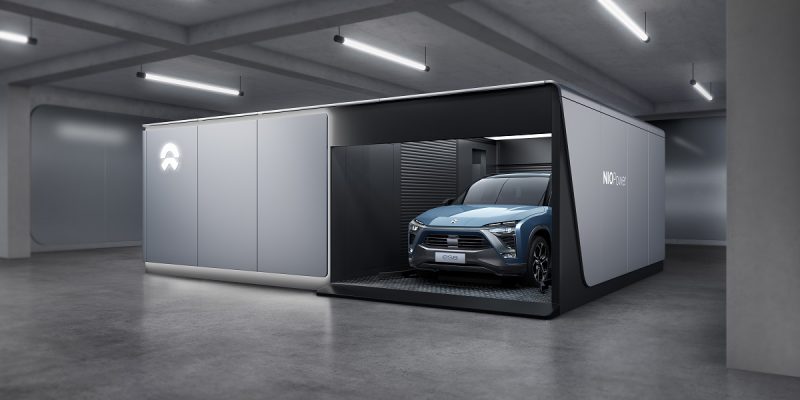For the first time ever, researchers in the University of Lisbon compared the plug-in charging, hydrogen and ICE scenarios against the lesser-known battery swapping scenario.
While this long-term study is still underway, its latest conclusion is that the swapping model can be the best in terms of transportation’s burden on a nation’s GDP. It can be even cheaper than diesel and gasoline vehicles. On the contrary, e-mobility based on plug-in charging would cost 1% more and the green hydrogen scenario would be a full 3% of GDP more expensive.
Until recently, the swapping model remained a niche subject. Both its proponents and opponents have put forward only hypothetical arguments rarely supporting them with sound data. This is where the true meaning of the study is. “This kind of systems analysis is both rare and invaluable,” said Levi Tillemann, vice-president for policy and international outreach at Ample. “A lot of research analyzes just the battery or charger without taking into account the cost and complexity of the generation, storage and distribution system.”
The study looks forward to the 2030s. By this time, energy generation in many countries is expected to be almost 100% renewable and the cost of batteries drastically lower than now. On the minus side, renewables are effectively non-dispatchable and unable to follow the demand’s spikes and lows. To offset this issue, power utilities will need to either install excessive generation and transmission capacities or use balancing technologies such as pumped or battery storages. Of course, this translates into an increased cost of electricity for consumers.
This is where electric vehicles can help. By the next decade, more than 20% of power generation will serve road transport with a huge impact on the total balance. In fact, all electric scenarios considered in the study turned out to be good for alleviating imbalances because vehicle charging or hydrogen production can be scheduled for the periods of energy excess characterized by lower electricity tariffs. However, their capabilities are different in quantity.
For instance, in the plug-in model, consumers can be quite flexible in choosing when to slow-charge their vehicles. However, rapid chargers lack this ability and also consume energy in short sharp spikes, the most challenging pattern for the renewables. Because of this, the hydrogen-based model is better owing to its capability to produce hydrogen only from cheap electricity.
In a sample calculation for Portugal by 2030s, without the balancing capabilities of EVs, the peak imbalance accounts for 13GW. The plug-in model can push it slightly down while the hydrogen one nearly halves the imbalance to 7GW. However, on the level of the total cost, the plug-in model wins from hydrogen because of the high cost of hydrogen production and FCEVs.
Meanwhile, the swapping scenario further lowers the imbalance to 2.4GW. Effectively, this is Portugal’s current level when much of the country’s energy is still produced by dispatchable fossil-fueled facilities. Just like the other models, the swap stations can reschedule charging to lower tariff periods. Moreover, they can inject some of the stored energy back into the grid when it’s maxed out, thus, reducing the need of stationary storage capacities. Remarkably, yet another conclusion is that, in this model, the needed volume of transportation can be done with less total capacity of batteries than in the plug-in model. As a result, it beats even the ICE-based scenario in terms of overall cost.
The researchers hope that policymakers will use the analysis as a base for helping the battery swapping networks with their chicken-and-egg issue. “The challenge is that it’s hard to get all things together,” said Antonio Vallera, the lead researcher in this study. “Gogoro’s successful early case is inspiring and it’s proves that, in a small country such as Taiwan, it’s relatively feasible to have all stakeholders agreed. In a big country like China, the issue touches vehicle makers, battery makers and oil companies because they supply electricity for EVs. If they all jump in the bandwagon, the whole country would benefit.”
Furthermore, a lot of technology enhancement has yet to be done before the swapping infrastructure can unleash the future potential. For example, state-of-the art swap networks lack the ability to reverse energy flows to help the grid through demand response. A few months ago, an early move in this direction was made by the Gogoro when it partnered with Taiwan’s state-owned utility to enable its swap stations to send energy back into the grid. However, it will take a while to reflect on the actual practice. In last March’s webinar attended by the author, its founder and CEO Horace Luke said that, currently, the stations are only capable to pause charging if the grid is maxed out. “The world needs smarter energy,” he said. “We’re just beginning to see where this can go.”
By Paul Myles
Source: https://www.tu-auto.com





